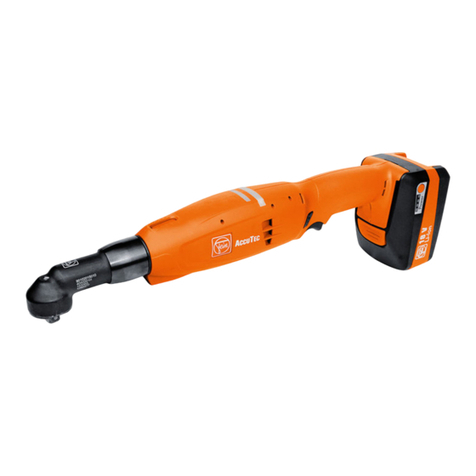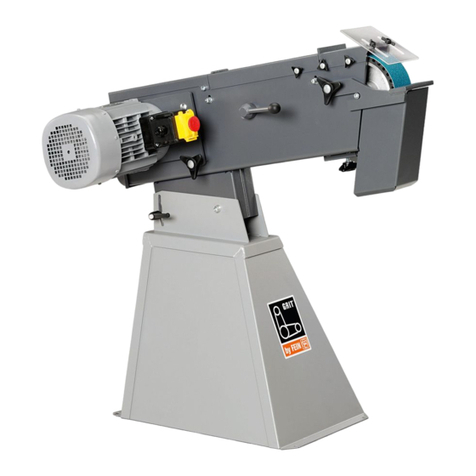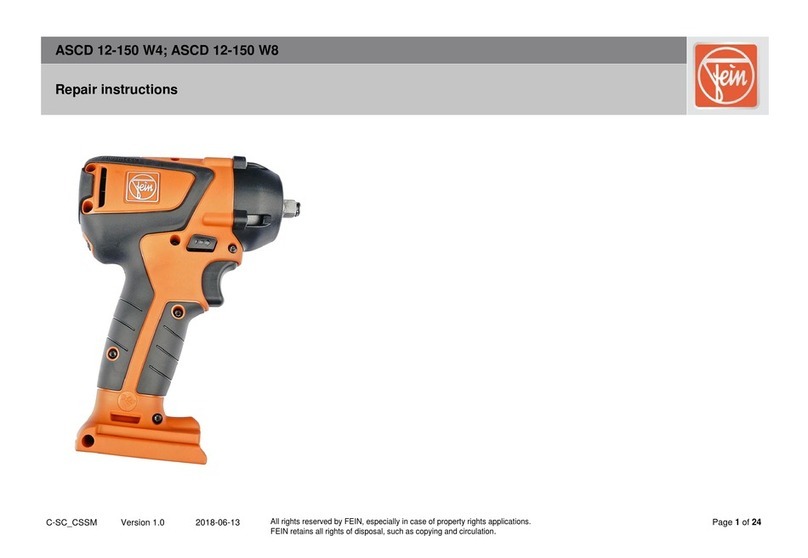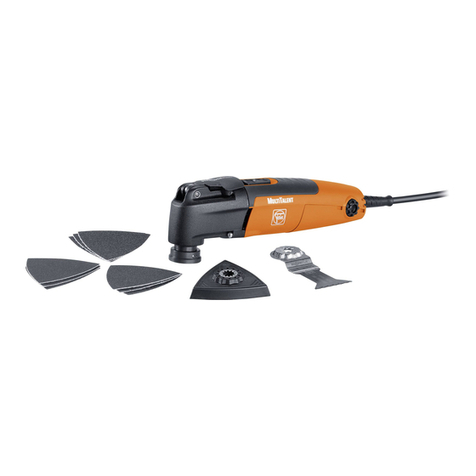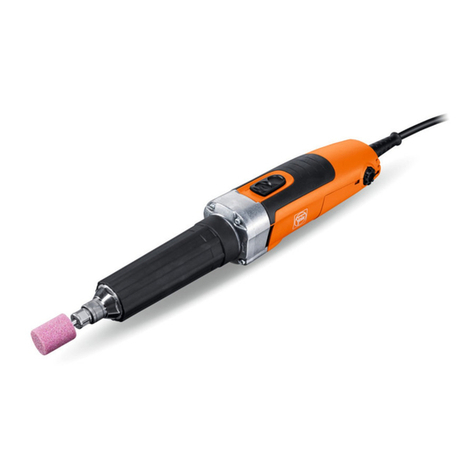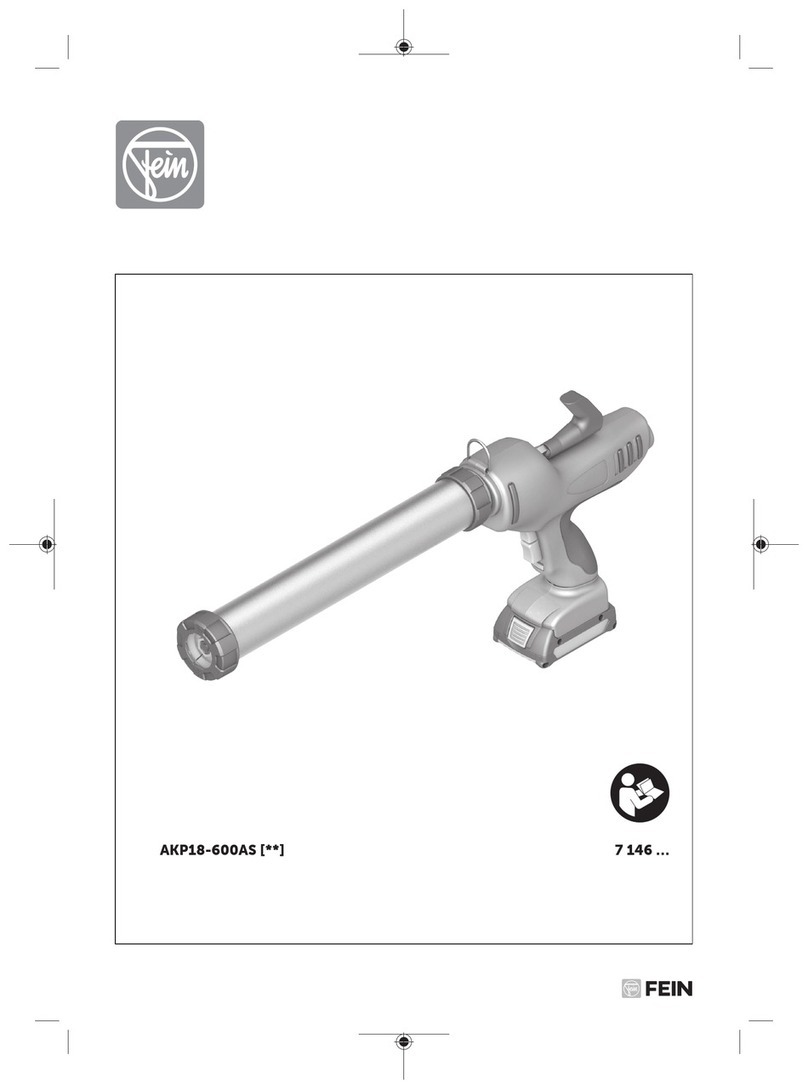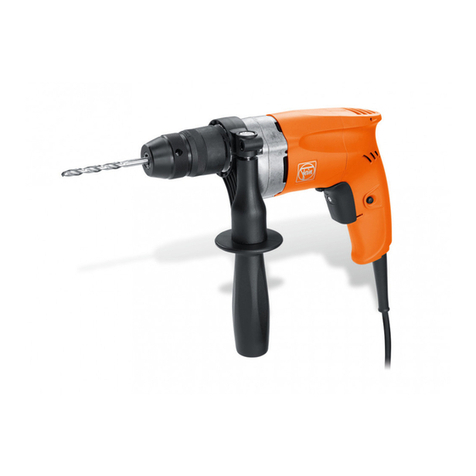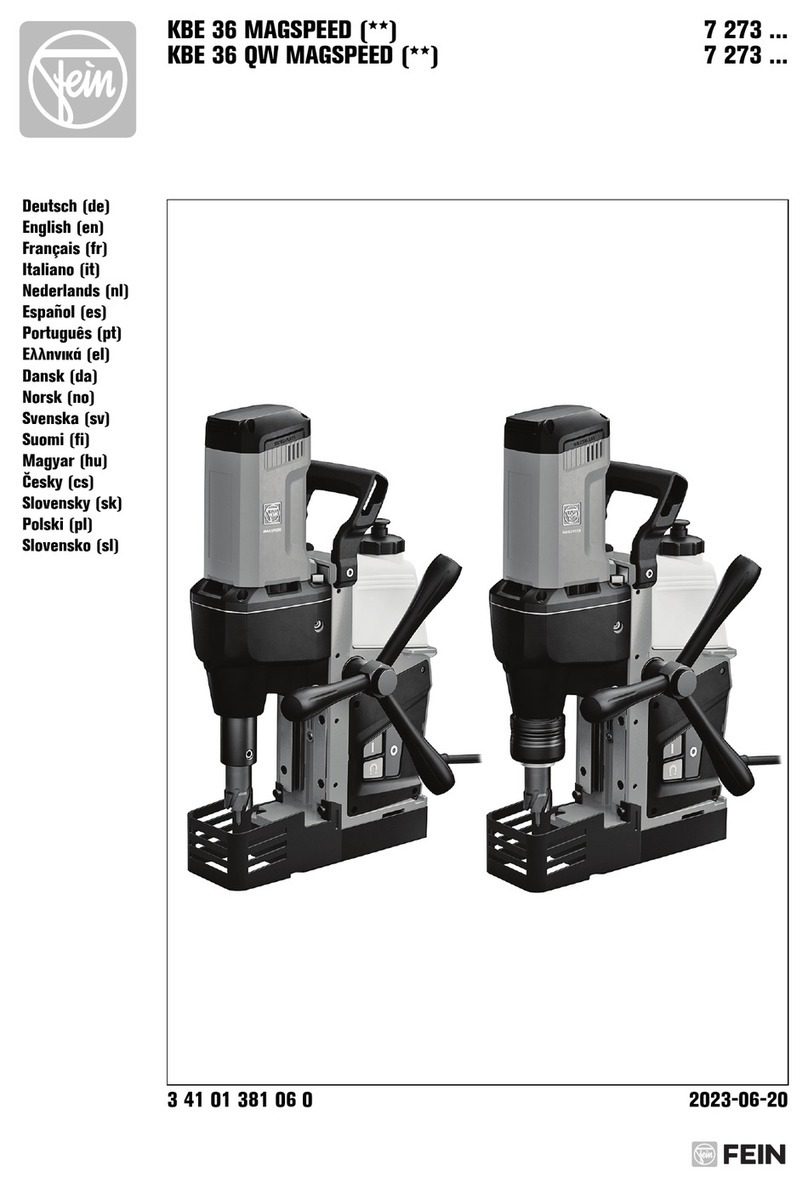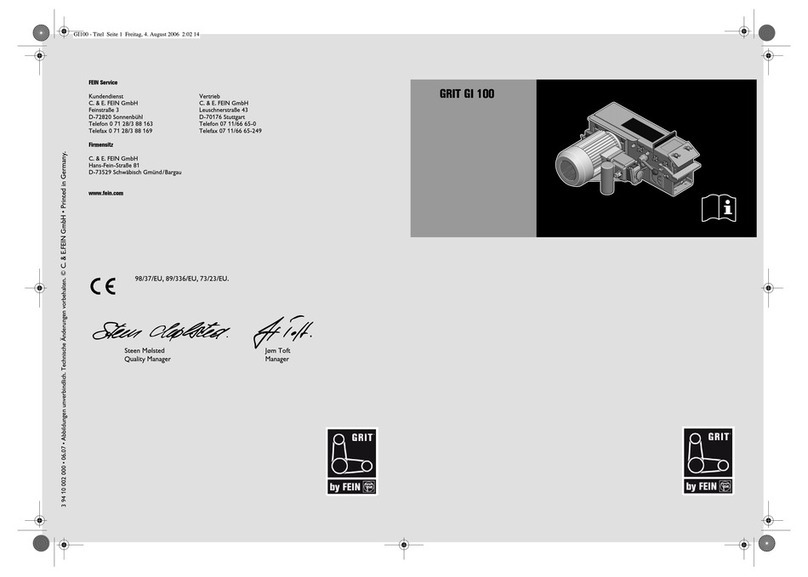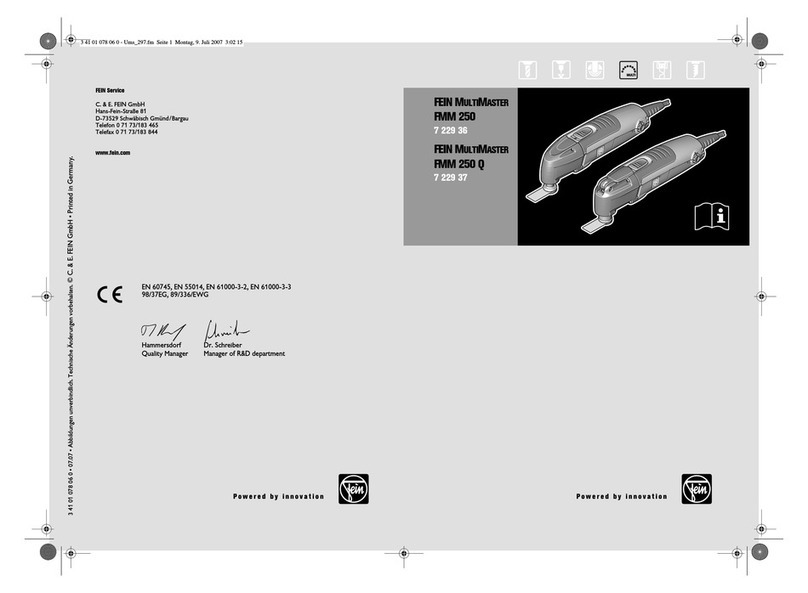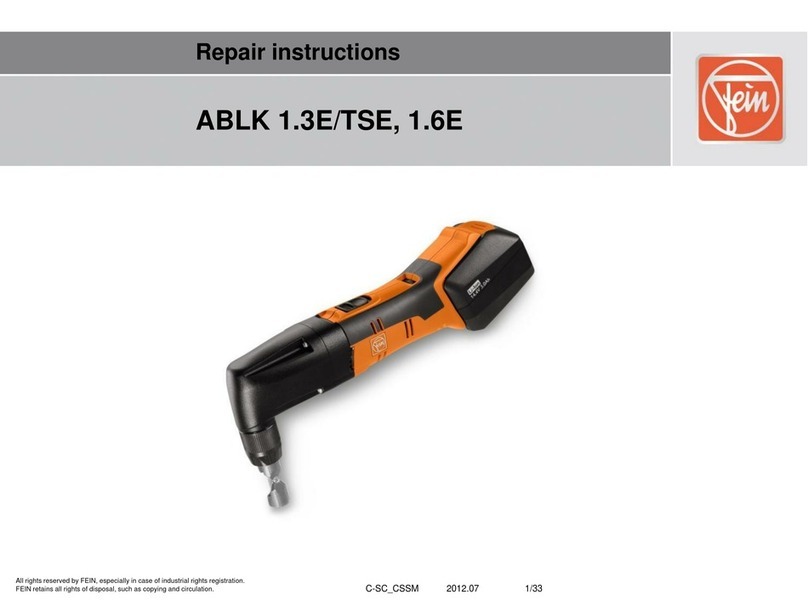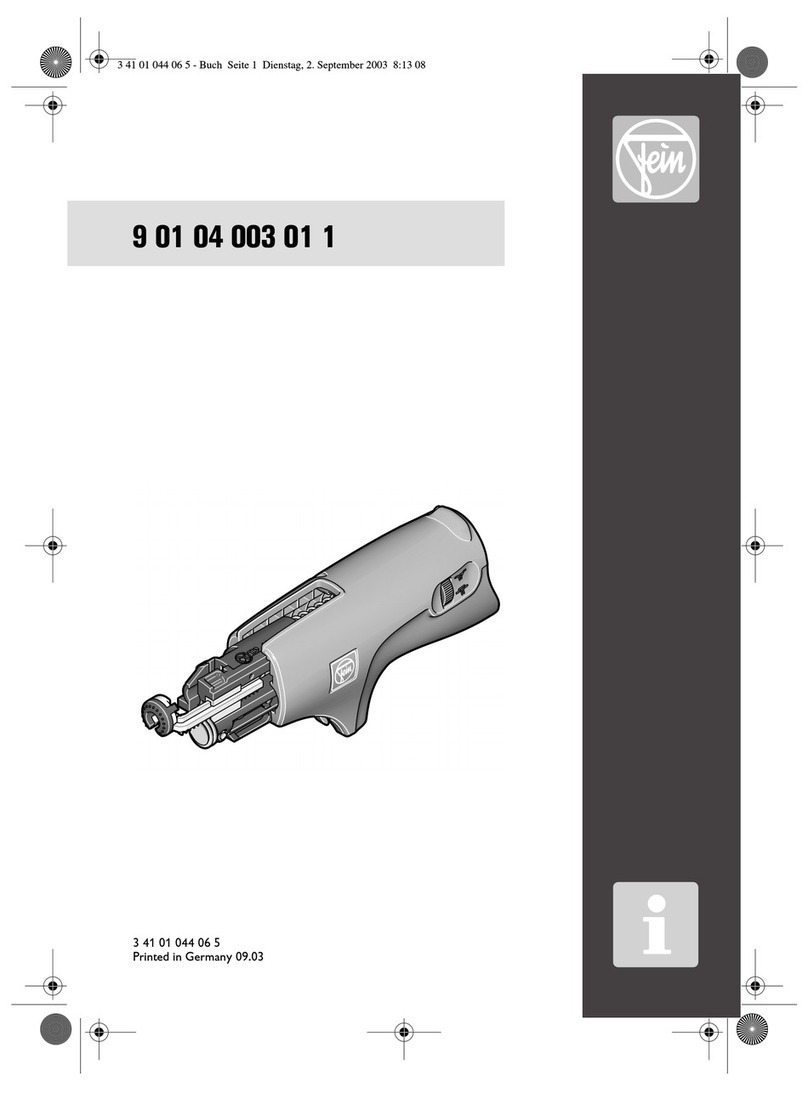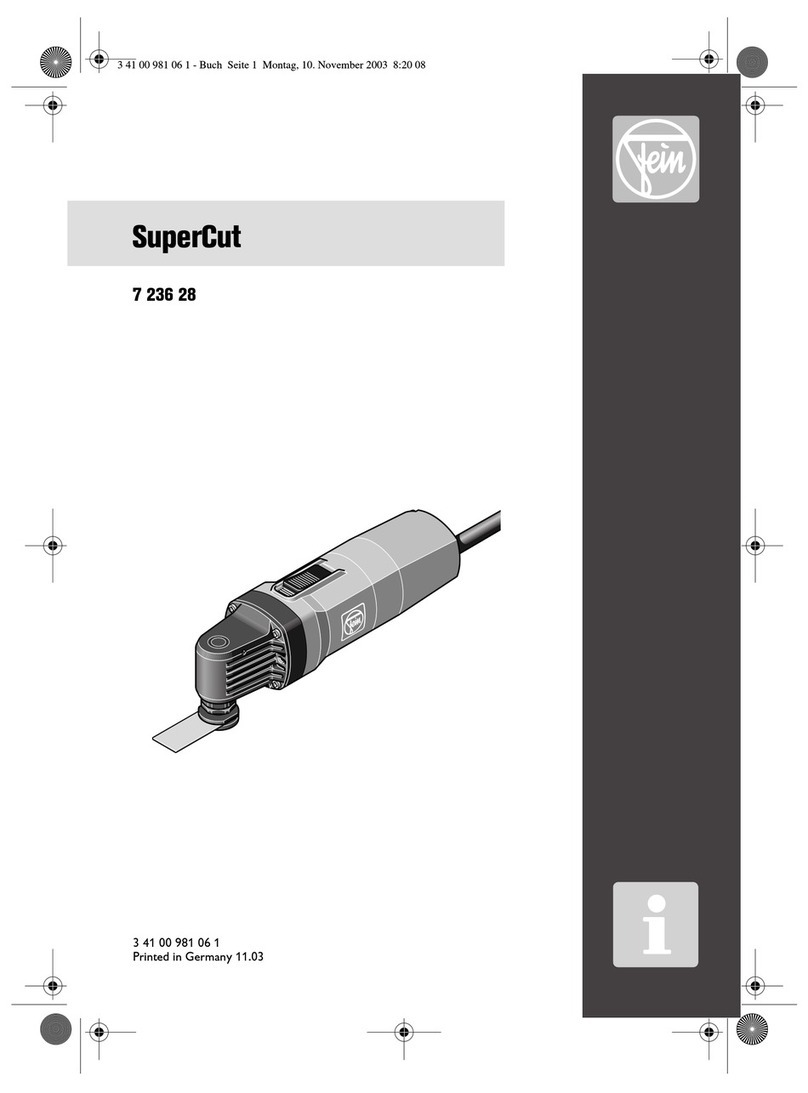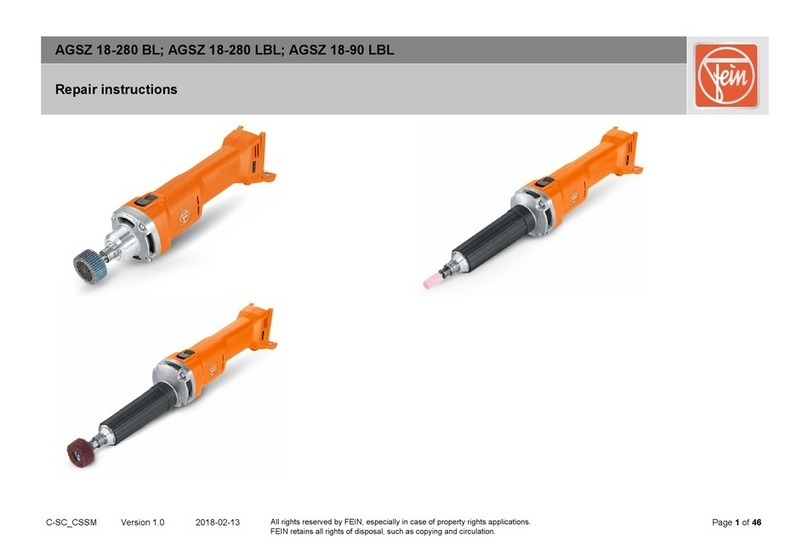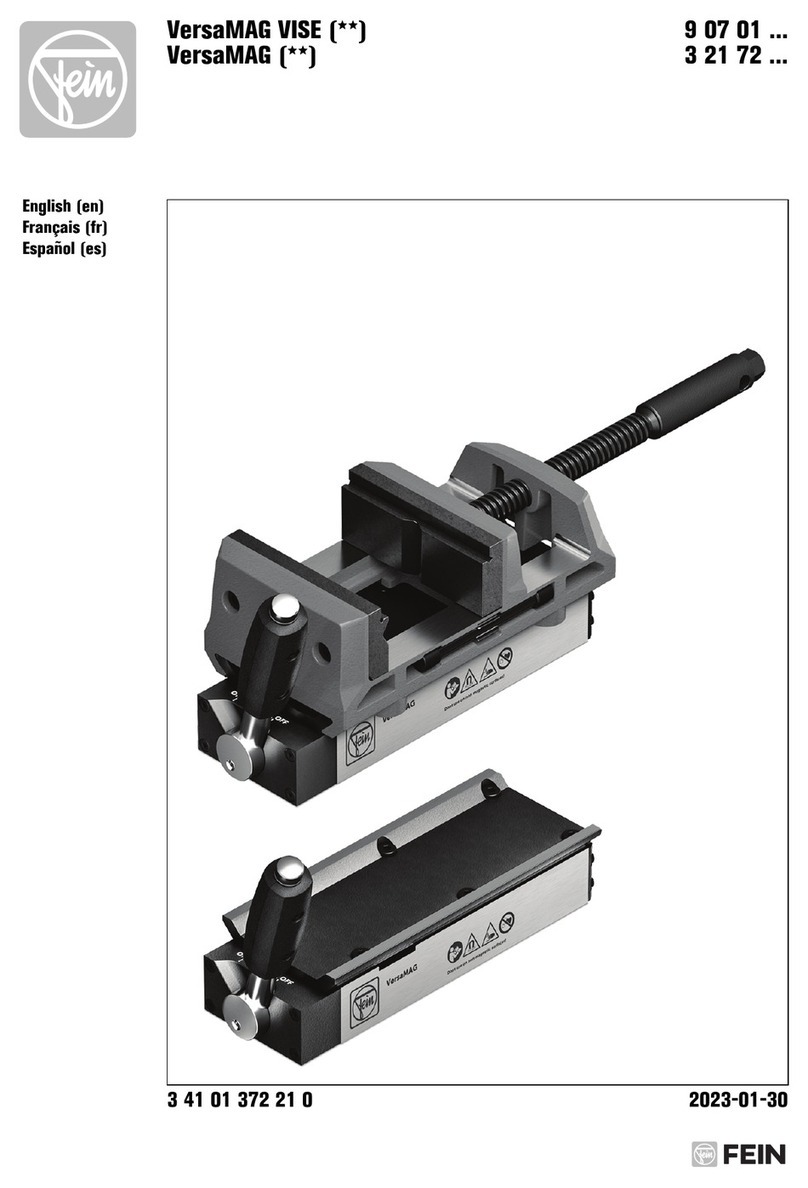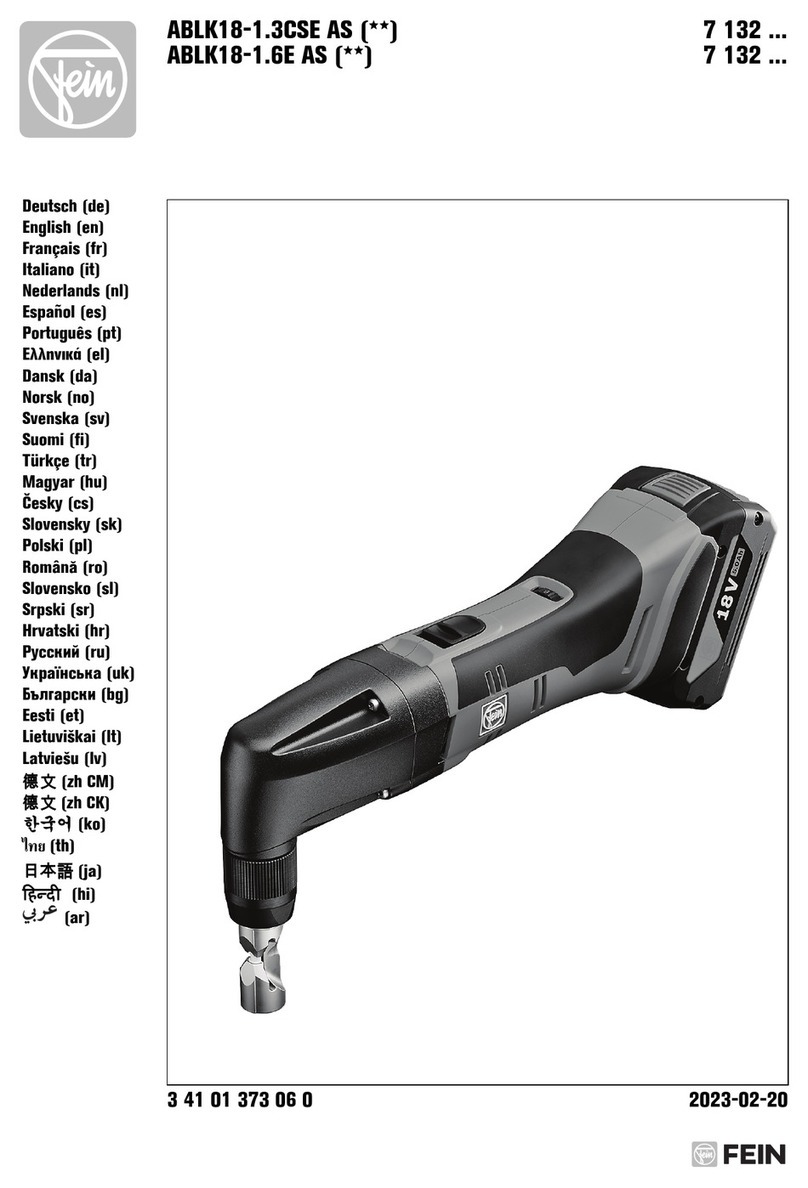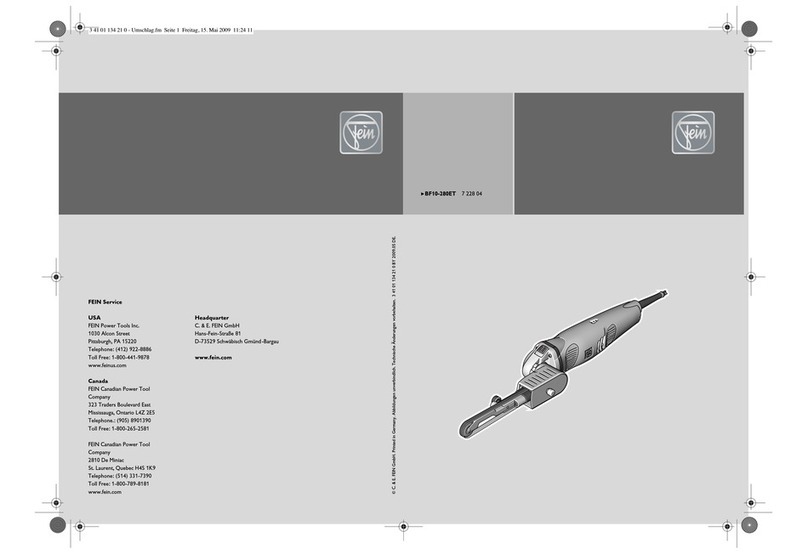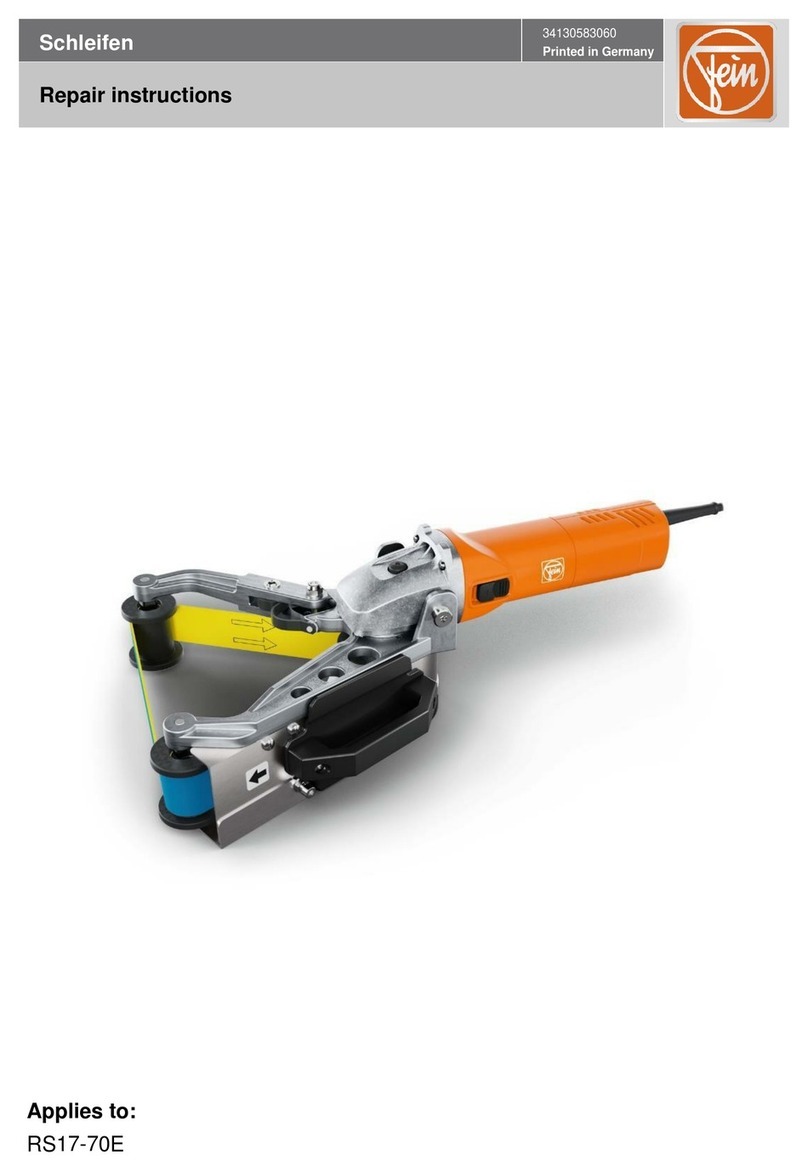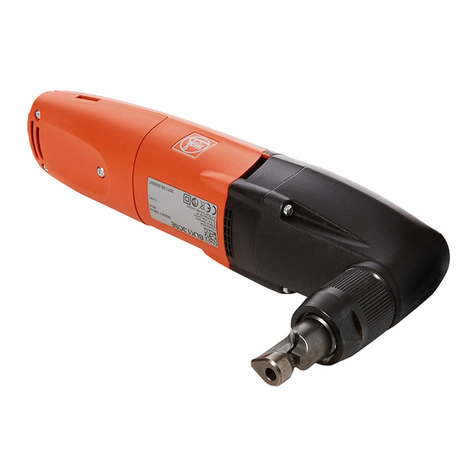
10 de
Zu Ihrer Sicherheit.
Lesen Sie alle Sicherheitshinweise
und Anweisungen. Versäumnisse bei
der Einhaltung der Sicherheitshinweise und Anwei-
sungen können elektrischen Schlag, Brand und/oder
schwere Verletzungen verursachen.
Bewahren Sie alle Sicherheitshinweise und Anwei-
sungen für die Zukunft auf.
Verwenden Sie dieses Elektrowerkzeug nicht,
bevor Sie diese Betriebsanleitung sowie die bei-
liegenden „Allgemeinen Sicherheitshinweise“
(Schriftennummer 3 41 30 465 06 0) gründlich gelesen
und vollständig verstanden haben. Bewahren Sie die
genannten Unterlagen zum späteren Gebrauch auf und
überreichen Sie diese bei einer Weitergabe oder Ver-
äußerung des Elektrowerkzeugs.
Beachten Sie ebenso die einschlägigen nationalen
Arbeitsschutzbestimmungen.
Bestimmung des Elektrowerkzeugs:
handgeführte Oszillierer zum Schleifen kleiner Flächen,
Ecken und Kanten, zum Sägen von dünnen Blechen,
Holz- und Kunststoffteilen, zum Schaben, Polieren,
Raspeln, Schneiden und Trennen mit den von FEIN
zugelassenen Einsatzwerkzeugen und Zubehör ohne
Wasserzufuhr in wettergeschützter Umgebung.
Spezielle Sicherheitshinweise.
Halten Sie das Gerät an den isolierten Griffflächen,
wenn Sie Arbeiten ausführen, bei denen das Einsatz-
werkzeug verborgene Stromleitungen treffen kann. Der
Kontakt mit einer spannungsführenden Leitung kann
auch metallene Geräteteile unter Spannung setzen und
zu einem elektrischen Schlag führen.
Verwenden Sie Klemmen oder eine andere praktische
Methode, um das Werkstück auf einer stabilen Unter-
lage zu sichern und abzustützen. Wenn Sie das Werk-
stück nur von Hand oder gegen Ihren Körper halten,
befindet es sich in einer instabilen Lage, die zum Verlust
der Kontrolle führen kann.
Ausgemusterte Elektrowerkzeuge und andere elektrotechnische und elektrische
Erzeugnisse getrennt sammeln und einer umweltgerechten Wiederverwertung zufüh-
ren.
Akkutyp
Ladegerättyp
Kleine Schwingzahl
Große Schwingzahl
(**) kann Ziffern oder Buchstaben enthalten
(Ax – Zx) Kennzeichnung für interne Zwecke
Symbol, Zeichen Erklärung
Zeichen Einheit international Einheit national Erklärung
UV V Bemessungsspannung
fHz Hz Frequenz
n
S
/min, min-1, rpm,
r/min /min Bemessungsschwingzahl
° ° Schwingwinkel
kg kg Gewicht entsprechend EPTA-Procedure 01
L
pA
dB dB Schalldruckpegel
L
wA
dB dB Schallleistungspegel
L
pCpeak
dB dB Spitzenschalldruckpegel
K...
Unsicherheit
m/s2m/s2Schwingungsemissionswert nach EN 62841
(Vektorsumme dreier Richtungen)
m, s, kg, A, mm, V,
W, Hz, N, °C, dB,
min, m/s2
m, s, kg, A, mm, V,
W, Hz, N, °C, dB,
min, m/s2
Basis- und abgeleitete Einheiten aus dem Inter-
nationalen Einheitensystem SI.
